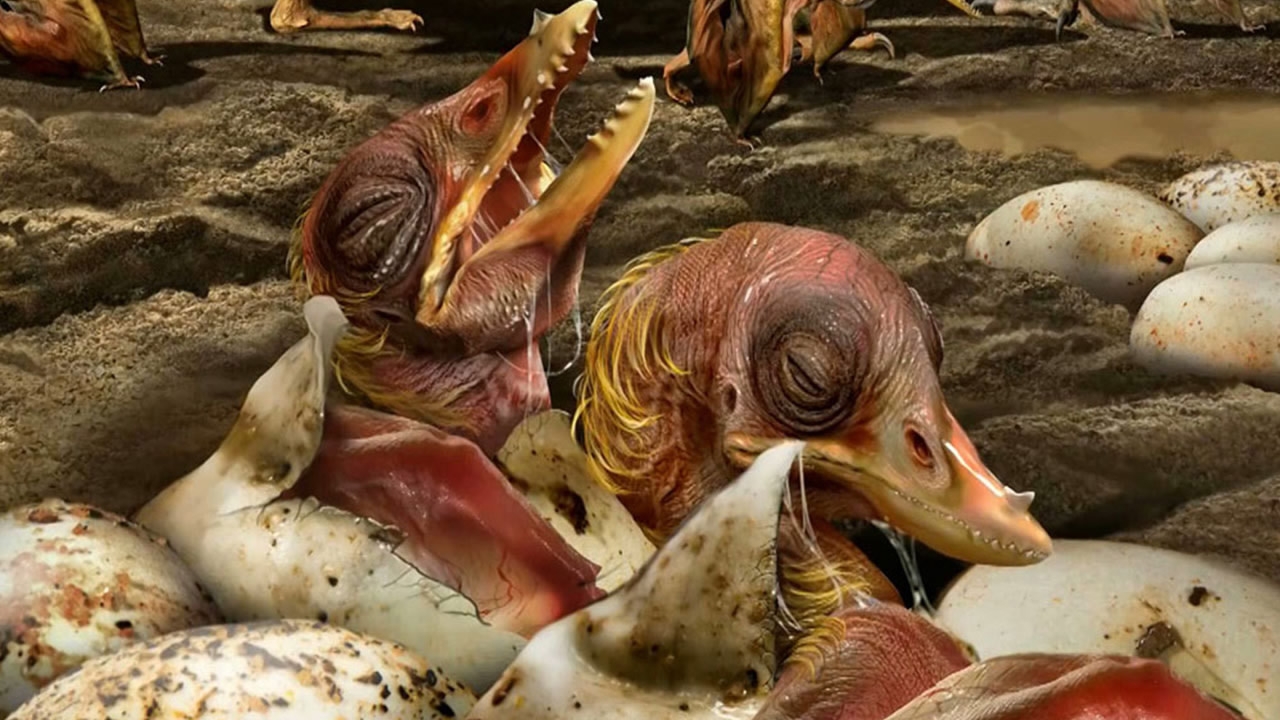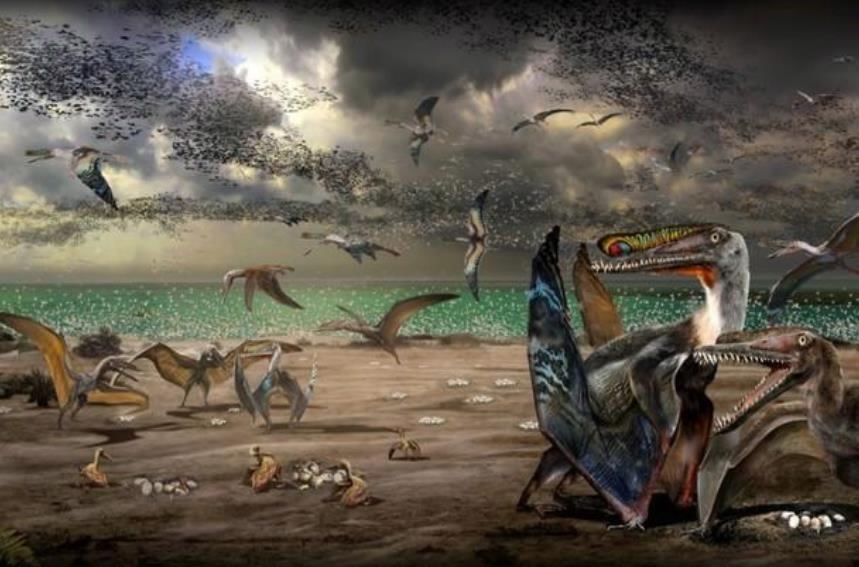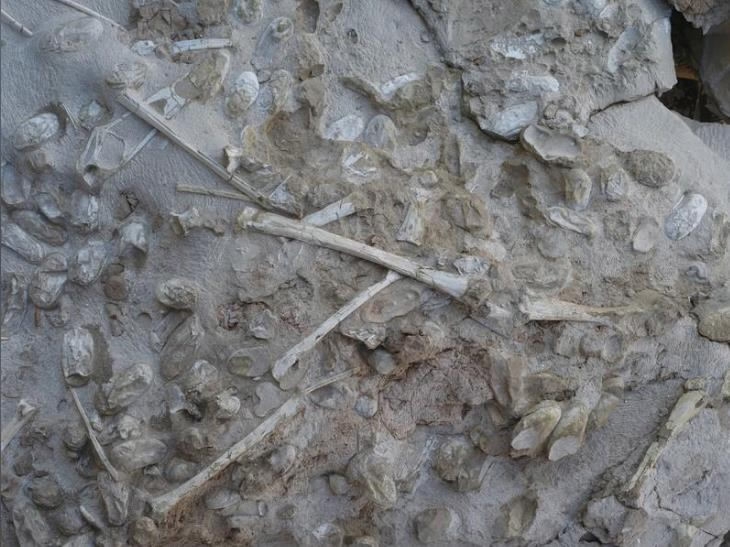
Tech & Sci
17:42, 17-Dec-2017
Chinese archaeologists unearth eggs of ancient flying reptile, the pterosaur
By Lucrecia Franco

Scientists in China recently made a stunning discovery – almost perfectly preserved pterosaur eggs. The winged creatures lived 120 million years ago alongside the dinosaurs. Very little is known about them.
The National Museum of Brazil in Rio de Janeiro is now hosting an exhibit on the groundbreaking paleontology discovery.
Pterosaurs, the airborne cousins of dinosaurs, disappeared 66 million years ago, and only a handful of their eggs had been found until now.
The discovery stunned scientists from all over the world, because it offers a chance to learn more about the little-known winged reptiles that ruled skies before birds.

An artist’s illustration shows individuals from the fish-eating pterosaur species Hamipterus tianshanensis, including adults, juveniles and eggs. /Reuters Photo
An artist’s illustration shows individuals from the fish-eating pterosaur species Hamipterus tianshanensis, including adults, juveniles and eggs. /Reuters Photo
A team of Chinese and Brazilian paleontologists, led by Wang Xiaolin and Alexander Kellner, made the discovery.
“We only had fewer than ten eggs, and now we have over two hundred to work with,” according to Kellener of Rio de Janeiro Federal University. “Some even containing embryonic remains that gives us an opportunity to have, for the first time, a glimpse of the embryological development of a creature that lived some 120 million years ago.”
The paleontologist is thrilled, and says that these animals, which could stand more than one meter tall with a wingspan of more than three meters, were in fact vulnerable.

Pterosaur egg specimen /Reuters Photo
Pterosaur egg specimen /Reuters Photo
“What we have learned is that as soon as they hatched they could walk, but they could not fly. That means that for some time parents had to care for them.”
The fossils were found in a three meter sandstone block north of Hami, in northwest China's Xinjiang Uygur Autonomous Region. Scientists say more field work is needed to shed light on the lives of the Earth’s first flying vertebrates.

SITEMAP
Copyright © 2018 CGTN. Beijing ICP prepared NO.16065310-3
Copyright © 2018 CGTN. Beijing ICP prepared NO.16065310-3